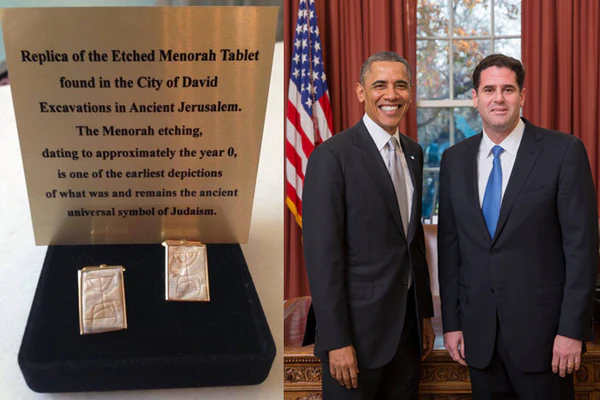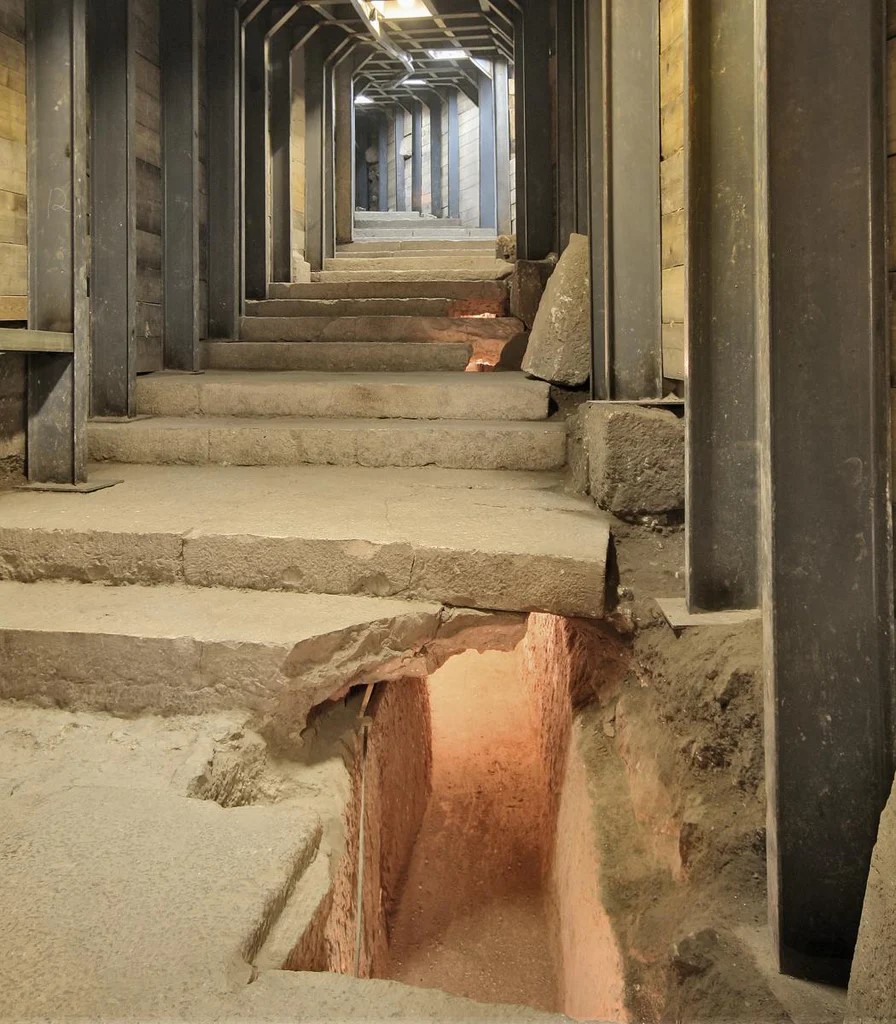Cart is empty
The menorah etched on these cufflinks, however, date to a significantly earlier period—specifically the year 0.
Discovered during the excavation of a drainage channel that runs beneath the ancient Herodian Road, the major thoroughfare upon which pilgrims traveled from the Shiloach Pool to the Temple Mount, the etching is a testament to the incredible bravery of the Jewish people as they fled the destruction of Jerusalem by the Romans. It was in this very drainage channel that the Jews hid as they fled Jerusalem. The cracks in the road above, made by the Romans as they searched for Jews in hiding, are still visible today.




